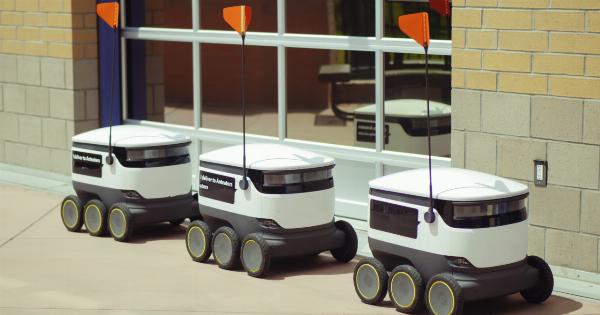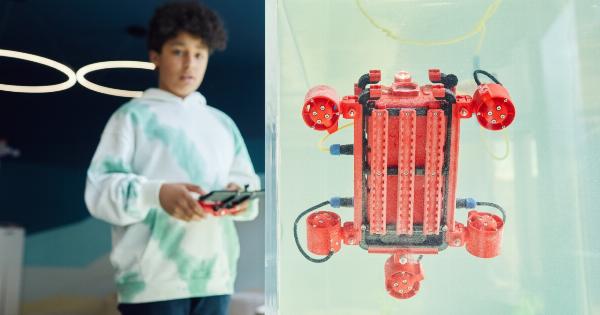Cybernetic spiders, a product of advanced technology, are now being used to perform surgeries on humans. These robotic spiders are capable of precise movements and have the ability to access hard-to-reach areas of the body.
They have become effective tools in the medical community and are revolutionizing the surgical industry.
What are Cybernetic Spiders?
Cybernetic spiders are robots designed and programmed to emulate the movement and behavior of real-life spiders.
These robots are engineered with a surgical precision, allowing them to perform delicate procedures in the human body that were previously impossible.
Benefits of Cybernetic Spider Surgery
One of the most significant benefits of cybernetic spider surgery is the precision and accuracy it provides. These robots are capable of working in tight spaces and reaching areas of the body that are difficult for human surgeons to access.
This precision has led to a reduced risk of complications and faster recovery times for patients.
Another benefit of cybernetic spider surgery is the minimally invasive nature of the procedures.
Unlike traditional surgeries that require large incisions, these robots can enter the body through small openings, reducing the risk of infection and minimizing scarring.
Additionally, cybernetic spider surgery allows for operations to be completed in a shorter amount of time.
The robots’ ability to quickly and precisely complete procedures means that patients can be under anesthesia for shorter periods, reducing the risk of complications.
How Cybernetic Spider Surgery Works
The cybernetic spider surgery procedure involves a team of skilled medical professionals, including a surgeon, nurses, and robot technicians.
The surgeon uses a computerized console to control the movements of the robot, which is positioned inside the patient’s body. The robot’s arms and legs can be adjusted to reach the surgical site, and its high-resolution cameras provide a clear view of the area.
During the operation, the surgeon controls the movements of the robotic spider using a joystick. The spider’s movements are precise and can be adjusted in real-time, allowing for minute adjustments to be made during the procedure.
Types of Cybernetic Spider Surgery
Cybernetic spider surgery is used for a variety of procedures, including minimally invasive surgeries and more complex operations. The following are a few examples of the types of surgery performed using cybernetic spiders.
Laparoscopic Surgery
Laparoscopic surgery is a minimally invasive procedure used to treat a variety of conditions, including gallstones, appendicitis, and hernias.
The procedure involves making small incisions in the abdomen, through which the robotic spider can enter the body. The surgeon uses the robot’s arms to manipulate the organs and tissues and a camera to view the surgical site.
Neurosurgery
Neurosurgery involves the surgical treatment of conditions affecting the brain, spinal cord, and nervous system. The use of cybernetic spiders in neurosurgery has revolutionized the industry, allowing for precise and minimally invasive procedures.
The robot is able to maneuver through delicate and complex structures with precision, reducing the risk of complications.
Cardiac Surgery
Cardiac surgery involves the surgical treatment of conditions affecting the heart and circulatory system. Cybernetic spider surgery has been effective in performing minimally invasive procedures such as valve replacement and repair.
The precision of these robots has resulted in reduced recovery time and lower complication rates.
Orthopedic Surgery
Orthopedic surgery is used to treat conditions affecting the musculoskeletal system. The use of cybernetic spiders in orthopedic surgery has been effective in performing joint replacement surgeries and repairs.
These robots are able to work in tight spaces and manipulate bones and tissues, resulting in reduced recovery time and less scarring.
Challenges in Cybernetic Spider Surgery
Although cybernetic spider surgery has many benefits, there are also several challenges to consider.
Cost
The cost of using cybernetic spiders for surgery can be high, as the robots require significant maintenance and upkeep. Additionally, the cost of training medical professionals to use the robots can also be expensive.
Malfunctions
Like any piece of technology, cybernetic spiders can malfunction. In the event of a malfunction, the surgery may need to be halted, which can be both dangerous and costly.
Lack of Human Touch
Cybernetic spider surgery removes the human touch from the operation. Although the robot is incredibly precise, it lacks the intuition and critical thinking skills that a human surgeon possesses.
Conclusion
Cybernetic spider surgery is a rapidly growing field in the medical industry. The benefits of using robots in surgery are significant, including precision, minimally invasive procedures, and reduced recovery times.
Although there are challenges associated with these robots, their use is becoming more prevalent as technology continues to advance.

























